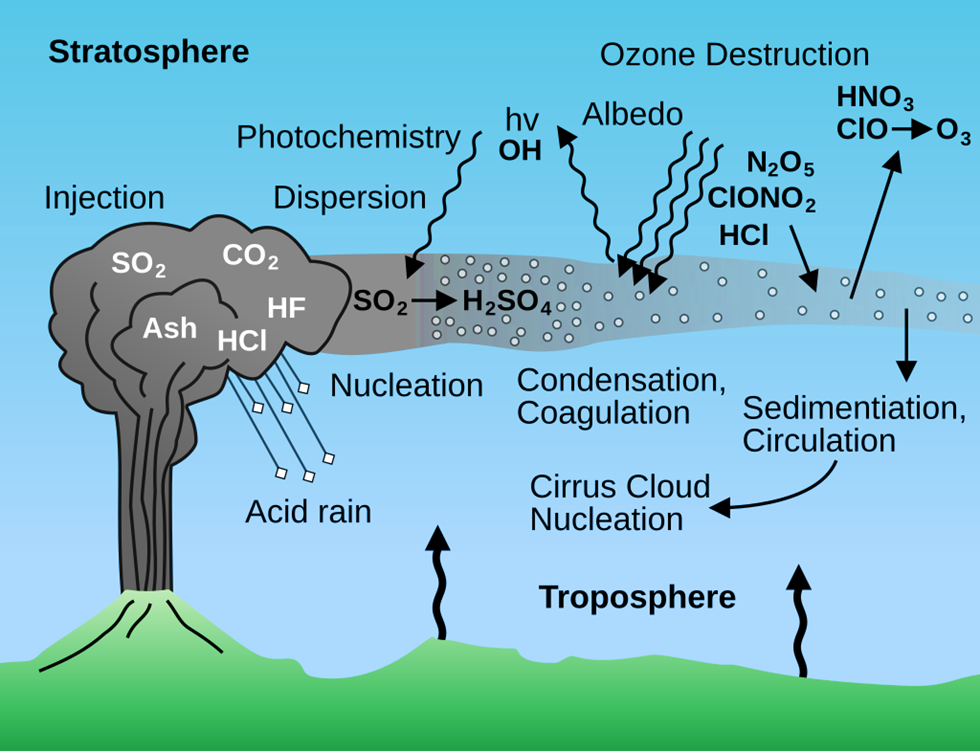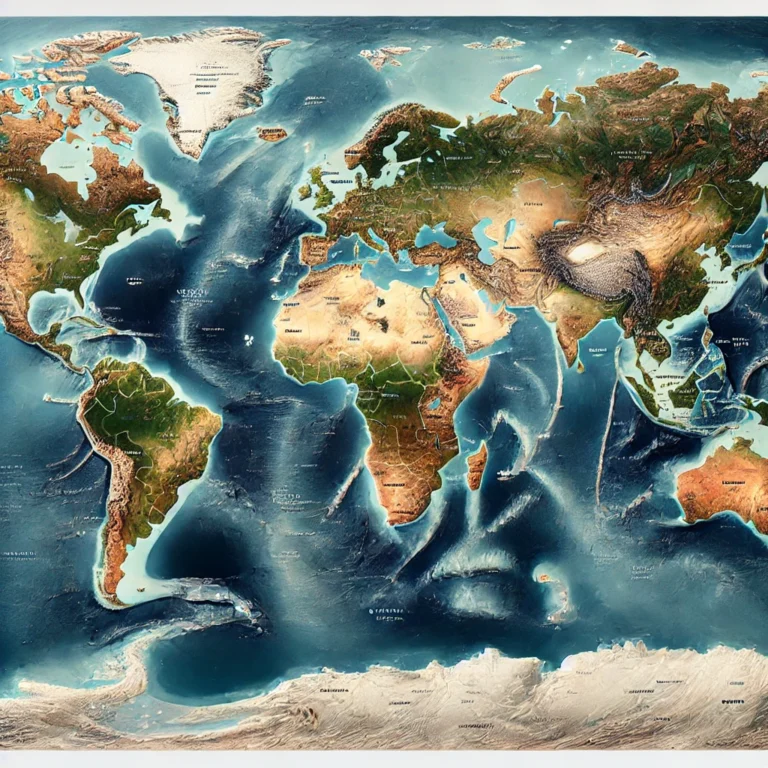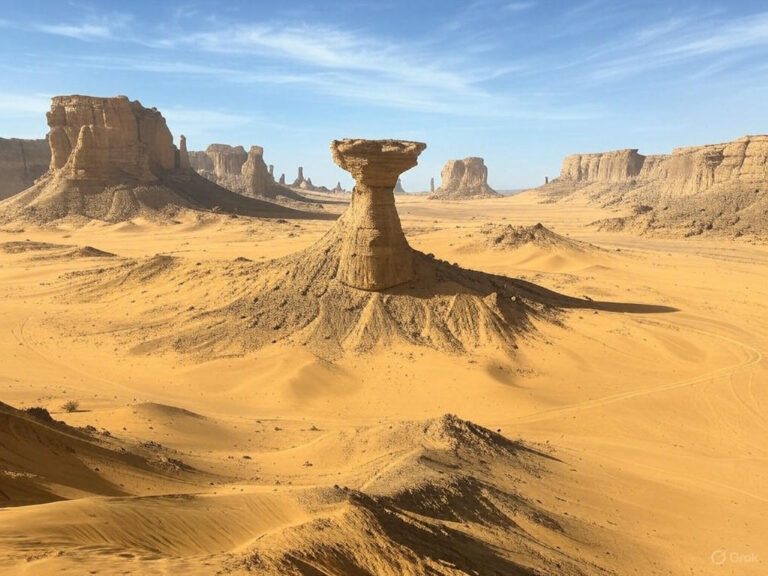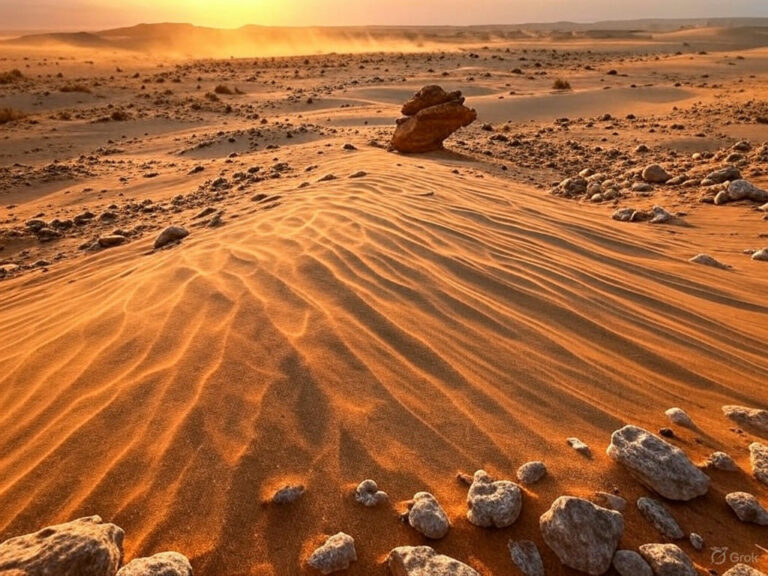Nature of Volcanoes and Magma Composition
Volcanoes are Earth’s pressure valves—releasing molten rock, gas, and debris from deep within. But not all volcanoes are the same! Their behavior depends on what’s melting beneath them and how easily magma can flow.
🧪 The Science Behind Magma – Partial Melting
Rocks aren’t pure substances—they’re made up of different minerals, each with different melting points. When heat rises, some minerals melt while others stay solid, a process called partial melting.
🔥 Bowen’s Reaction Series & Magma Evolution
As magma forms, different rock types appear in a sequence:
✅ Peridotite → Basalt → Andesite → Granite
📍 What this means:
- Basaltic magma (from peridotite) is runny and fluid.
- Andesitic magma (from basalt) is thicker and more explosive.
- Granitic magma (from andesite) is extremely viscous and explosive.
Where Does Magma Come From?
1️⃣ Mid-Ocean Ridges (MORs) – The Basalt Factories
🔹 Magma Source: Mantle peridotite.
🔹 Lava Type: Basaltic (low silica, runny, non-explosive).
🔹 Example: Iceland, Mid-Atlantic Ridge
💡 Why?
At MORs, mantle rock partially melts, producing fluid basalt that forms new oceanic crust.
2️⃣ Convergent Boundaries – The Andesite Makers
🔹 Magma Source: Subducting basaltic oceanic crust.
🔹 Lava Type: Andesitic (medium viscosity, more explosive).
🔹 Example: Andes Mountains, Japan’s Ring of Fire
💡 Why?
When an oceanic plate subducts, it melts and mixes with water, producing sticky and explosive andesitic magma.
🌋 Volcanoes here are more violent than those at MORs because their magma is thicker and traps more gas!
3️⃣ Hotspots – The Deep Mantle’s Fire Breath
🔹 Magma Source: Deep mantle near the core-mantle boundary.
🔹 Lava Type: Ultramafic, extremely fluid basalt.
🔹 Example: Hawaiian Islands, Yellowstone
💡 Why?
Hotspots are mysteries, but we know their magma comes from deeper than MORs—making it even more fluid. That’s why hotspot volcanoes form shield volcanoes, with calm, continuous lava flows.

🌋 Why Some Volcanoes Explode While Others Flow?
The explosiveness of a volcano depends on magma viscosity (thickness):
| Magma Type | Silica Content | Viscosity | Explosion Level |
|---|---|---|---|
| Basaltic (Mafic) | Low (50%) | Runny | Gentle 🌊 |
| Andesitic (Intermediate) | Medium (60%) | Sticky | Moderate 💥 |
| Granitic (Felsic) | High (70%+) | Very thick | Extremely Explosive 💀💣 |
🔥 Simple Rule: More silica = More viscous magma = Bigger explosions!
🧨 Volcanic Materials – What Comes Out of a Volcano?
1️⃣ Volcanic Gases & Vapors 💨
🌫️ Steam & Water Vapor (60-90%) – The main driver of explosions!
🌫️ CO₂, SO₂, CO, NO₂, H₂ – Toxic gases that can affect climate.
2️⃣ Pyroclastic Materials (Explosive Debris) 💣💀
🧨 Volcanic Dust & Ash – Fine particles that can circle the globe!
🧨 Lapilli – Pebble-sized fragments.
🧨 Volcanic Bombs – Molten blobs that harden in the air.
🧨 Scoria & Pumice – Frothy, gas-filled rocks.
💀 The Worst of Them All – Pyroclastic Flows
Superheated clouds of gas, ash, and lava fragments moving at 700 km/h – responsible for Mount Pelée’s deadly 1902 eruption.

Pseudo-Volcanoes 🌋🕵️♂️
Not everything that looks like a volcano is actually one! Some natural features resemble volcanic craters, domes, or eruptions but have no connection to magma or volcanic activity. These are called pseudo-volcanic features.
🌠 1️⃣ Meteorite Craters
💥 When large meteorites crash into Earth, they create deep circular depressions that might look like volcanic craters.
Example: Lonar Lake, Maharashtra
- Once thought to be a volcanic crater, but later proven to be a meteorite impact site.
- Formed ~50,000 years ago when a massive rock from space struck the Deccan Plateau.
🧂 2️⃣ Salt Plugs
🔹 Deep underground, rock salt behaves like a thick, sticky fluid when under high pressure.
🔹 Over time, it pushes through layers of rock, forming dome-shaped structures that look like volcanic cones!
🔹 They even have crater-like sinkholes formed by subsidence.
🌍 Common Locations:
✔️ Iran
✔️ Gulf of Mexico
✔️ Germany
🌋 3️⃣ Mud Volcanoes
🔹 Unlike real volcanoes, mud volcanoes don’t erupt lava—instead, they spew out mud, water, and gases like methane and CO₂.
🔹 They’re often found in petroleum-rich regions, where underground gases push mud and slurries to the surface.
🌎 Famous Mud Volcanoes:
✔️ Baku, Azerbaijan – The “Land of Fire” has some of the world’s largest mud volcanoes!
✔️ Baluchistan, Pakistan – Gas-rich region with frequent eruptions.
✔️ Burma (Myanmar) – Linked to deep oil and gas deposits.
🔎 Key Differences: Real Volcano vs. Pseudo-Volcano
| Feature | Real Volcano 🌋 | Pseudo-Volcano 🕳️ |
|---|---|---|
| Heat Source | Magma (from deep Earth) 🌡️ | External forces (Meteorites, gases, salt) 🌍 |
| Eruptions | Lava, ash, gases | Mud, water, gases |
| Formation | Tectonic processes (subduction, rifting, hotspots) | Non-volcanic origins (impact, gas pressure, salt movement) |
| Example | Mount Etna, Kilauea | Lonar Lake, Baku Mud Volcano |
🌍 Conclusion: Not All That Smokes is Fire!
While pseudo-volcanoes may look like volcanoes, their origins are entirely different! Whether it’s a meteorite impact, a salt dome, or a mud eruption, these natural formations remind us that Earth’s surface is shaped by many forces beyond magma! 🌎🔥
🌋 Volcanoes: Destruction and Creation — Two Sides of the Same Coin
🔥 Destructive Effects of Volcanoes
Volcanoes are nature’s most violent expression of internal energy. When they erupt, the consequences are often catastrophic — not only for the region but sometimes even for the entire planet.
Let’s decode this destruction point by point, using real-life case studies that you can directly quote in Mains answers.
1. Cinders, Bombs, and Burning Skies
“Volcanic eruptions don’t always need lava to kill.”
During explosive eruptions, cinders (small pyroclasts) and volcanic bombs (larger chunks of semi-molten lava) are hurled into the air. These rain down with tremendous heat and speed, damaging life and property.
- Case in Point: The eruption of Mount Vesuvius in 79 AD buried the Roman cities of Pompeii and Herculaneum under volcanic ash and rock. Thousands perished without warning.

2. Tsunamis Born of Fire
When volcanic eruptions occur under the sea or near coastlines, they can displace massive volumes of water, causing tsunamis — large sea waves that strike coastal areas with deadly force.
- 1883 Krakatoa (Indonesia): The eruption generated tsunami waves up to 40 meters high, killing over 36,000 people.
- 2018 Sunda Strait Tsunami: Caused not by an earthquake, but by the collapse of a volcanic island (Anak Krakatoa).
3. Volcanic Ash and the Global Thermostat
Volcanoes don’t just damage locally — they can change the Earth’s climate. Massive eruptions send volcanic ash and sulphur aerosols into the stratosphere, reflecting sunlight and lowering global temperatures.
- Mount Tambora (1815): Caused the “Year Without a Summer” in 1816. Crop failures and famines followed in Europe and North America.
- This is a classic example of volcano-induced climate change.
4. Lava Rivers: Destruction in Slow Motion
Unlike explosive eruptions, Hawaiian-type eruptions are less violent but still devastating. They release lava flows that travel down slopes and valleys, engulfing everything in their path.
- Entire towns can be wiped out — not with a bang, but with a molten creep.
5. Lahars: Mud Monsters from the Volcano
A lahar is a terrifying mixture of volcanic ash, mud, water, and debris that flows down river valleys at high speed — like a concrete tsunami.
- 1985, Nevado del Ruiz (Colombia): A lahar buried the town of Armero, killing over 20,000 people within minutes.
6. Collapse of Lava Domes: Sudden Doom
Sometimes, viscous lava forms a dome over the crater. When this dome collapses, it triggers pyroclastic flows — fast-moving clouds of hot gases, ash, and rock fragments.
- Mount Pelée (1902): One such flow destroyed Saint-Pierre in Martinique; only 2 out of 28,000 people survived.
7. Disruption of Air Travel: The Invisible Threat
When fine volcanic ash reaches the upper atmosphere, jet engines can stall mid-air. Airspace becomes hazardous, grounding flights across regions.
- Eyjafjallajökull (Iceland, 2010): Disrupted European air traffic for weeks, causing economic losses worth billions
8. Supervolcanoes: Extinction-Level Events
Finally, the most dangerous of all — supervolcanic eruptions. These are thousands of times more powerful than regular eruptions.
- Toba Supervolcano (Indonesia, ~74,000 years ago): Caused a “volcanic winter” lasting years, possibly leading to a bottleneck in human evolution.
9. Volcanism and the Atmosphere: Acid Rain & Ozone Loss
Volcanoes release gases like:
- Sulphur dioxide (SO₂)
- Carbon dioxide (CO₂)
- Hydrogen fluoride (HF)
These gases can:
- Form acid rain → Damaging crops, forests, and buildings.
- Enter the stratosphere, where SO₂ aerosols promote ozone layer depletion and trigger global cooling.
🌱 Positive Effects of Volcanoes
Despite their fury, volcanoes are not just agents of destruction — they are also creators of new land, minerals, energy, and beauty. Let’s explore their constructive contributions.
1. Creation of Landforms and Fertile Soils
Volcanoes build:
- Islands (e.g., Iceland, Hawaii)
- Plateaus (e.g., Deccan Traps)
- Volcanic mountains
Volcanic ash and lava weather into fertile soils, ideal for orchards and farming. That’s why regions around volcanoes, despite risks, remain densely populated (e.g., Java, Indonesia).
2. Forestry on Volcanic Slopes
While agriculture may be difficult on steep volcanic slopes, forests thrive in the nutrient-rich soils. These areas support commercial timber operations.
3. Rich in Mineral Deposits
Volcanoes bring minerals from deep inside the Earth to the surface:
- Metallic ores (copper, zinc, lead)
- Gas cavities may host precious minerals
- The famous Kimberlite Pipes of South Africa (source of diamonds) are remnants of ancient volcanic activity.
4. Geothermal Energy: Power from the Earth’s Core
Volcanic regions are hotspots for geothermal energy, used for:
- Electricity generation
- Space heating
Major producers: USA, Japan, Italy, New Zealand, Mexico
In India:
- Puga Valley (Ladakh)
- Manikaran (Himachal Pradesh) are promising sites.
5. Tourism and Scenic Beauty
Volcanoes are natural wonders that attract millions:
- Volcano tourism boosts local economies
- Many national parks (e.g., Yellowstone) are centered around volcanic landscapes
6. Engineering Use: Crushed Lava Rock
Volcanic rocks are used as:
- Railway ballast
- Concrete aggregate
- Construction material
Thus, even dead lava flows have an afterlife — in human engineering.
Final Reflection 🧠
So, what do volcanoes teach us?
They are not simply agents of death, but forces of transformation. They bury cities — but also build islands. They destroy civilizations — but enrich the soil for new ones to rise.
In UPSC Mains, always try to present both sides — the destructive and constructive — supported by real-world examples.




